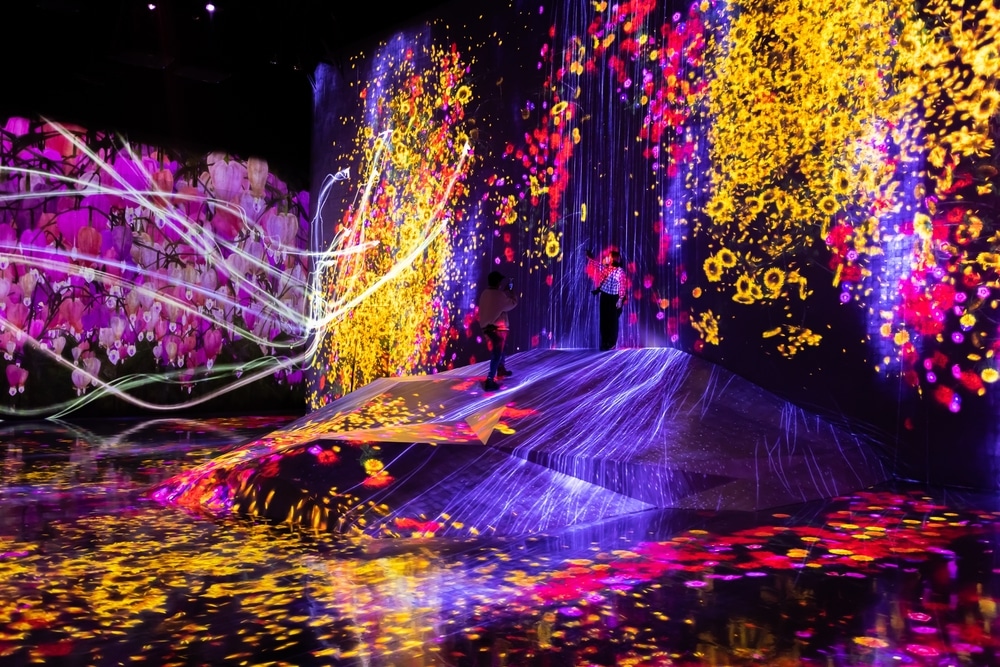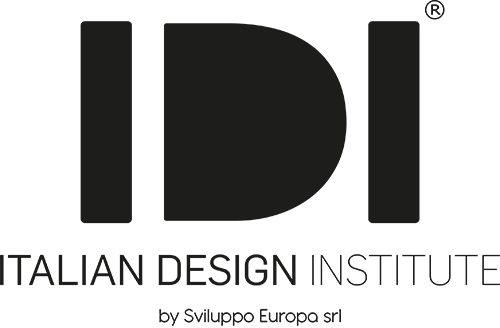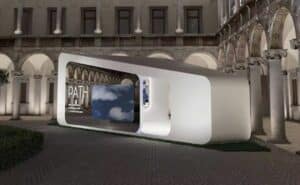Technological evolution has radically transformed the way we experience the cultural experiencesleading to the emergence of multimedia museums offering interactive and engaging exhibition routes. More and more organisations are designing and realising innovative museum spaces with the help of experts, where technology is not just a complement, but a key element to enrich the visitor experience.
The rise of immersive and experiential exhibitions marks an important paradigm shift in contemporary culture, in which the public increasingly seeks experiences that break with the traditional passive enjoyment of art. These exhibitions offer a new way of approaching culture, one that emphasises direct and personal experience, and one that can adapt to the tastes and interests of a heterogeneous audience.
A multidisciplinary approach to design
The multimedia design of a museum requires a multidisciplinary approach that integrates expertise in designtechnology, and cultural-historical content. The main aim is to create visitor routes that, through the use of multimedia, become immersive and interactive experiences and tell the stories held in the museum in an innovative way, without technology taking over, but becoming a means of interpreting and enhancing museum content.
Immersive exhibitions represent a revolution in the way of experiencing art and cultureradically transforming the traditional approach to the enjoyment of works. At the heart of this change is the intention to actively involve the viewer, transforming him from a mere observer to a direct participant in the artistic experience. This new exhibition model has gained extraordinary popularity because it manages to combine the educational and playful aspects, creating a richer and more satisfying overall experience for visitors.
Interactivity in the Service of Art
La realisation of multi-sensory software and applications is essential to create a dialogue between the visitor and the exhibited works. Through interactivity, the public does not just observe, but actively participates in the museum experience, often in a playful way. This new way of enjoying museums radically changes the relationship between the public and the works, making each visit unique and personal.
High-definition projections, sound, light and augmented reality are just some of the tools used to stimulate visitors' senses, inviting them to interact with the exhibition space in ways that go far beyond mere visual observation.
This participatory approach not only makes art accessible to a wider audience, but also stimulates a deeper and more personal understanding of the works on display. The possibility of interacting directly with the artistic environment allows each visitor to build a unique and personal experience that remains etched in the memory well beyond the duration of the visit.

The Stages of Multimedia Design
The creation of the idea to the overall management of the multimedia project comprises several stages:
- Concept: Each project stems from an innovative idea that aims to transform the museum space into a place of discovery and interaction.
- Communication DesignThe most effective communication strategies to engage the audience are defined.
- Multimedia Content Developmentcontent is produced to enrich the museum experience, making it dynamic and participatory.
- Software and Application Developmentsoftware solutions and interactive applications are developed that allow multi-sensory interaction with the works.
- Custom Hardware Creationcustomised hardware devices are designed to integrate seamlessly into the museum layout.
- Usability TestingThe effectiveness of the multimedia workstations is checked to ensure a smooth user experience.
The Importance of Specific Training
For realising projects of such complexity is essential have specialised expertise. The training offered by institutions such as Italian Design Institute plays a crucial role in the development of qualified professionals in the field of multimedia design for museums. Through dedicated courses such as the Visual Museum Specialisation Course and the Visual Museum Experience you can acquire the knowledge and skills necessary to interpret the needs of the museum sector and turn them into innovative and effective solutions.
Towards the future of museums
The multimedia design of museums represents an advanced frontier in the field of cultural heritage enhancement. The challenge is to create cultural spaces that, thanks to the integration of innovative technologies, can offer the public increasingly immersive and personalised experiences. Continue to explore new possibilities, realising museums that are not only places of preservation, but also of active participation and continuous discovery is the future, indeed the present of cultural enjoyment.




